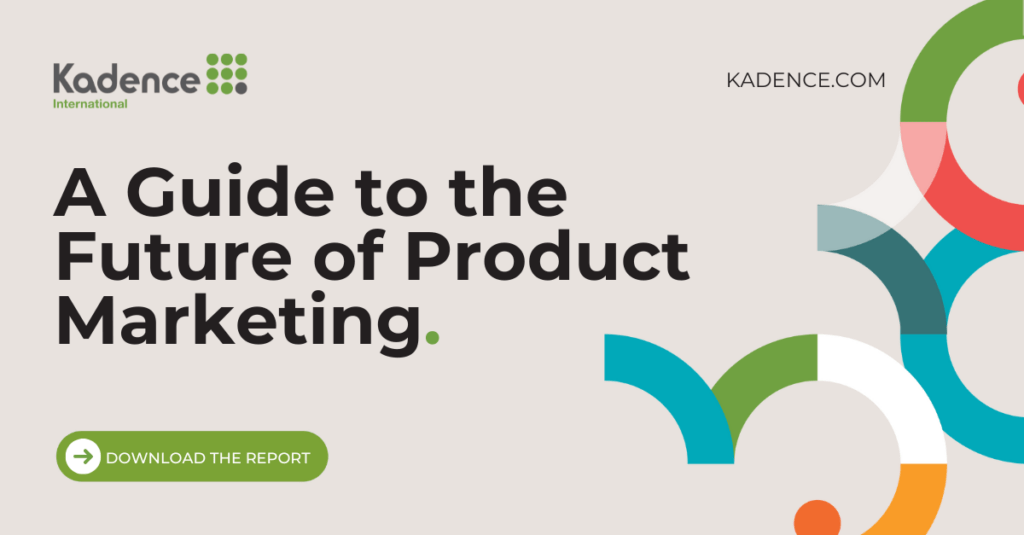Imagine this: it’s the year 2033, and you’re a market researcher tasked with analysing a massive dataset of consumer responses to a new product launch.
In the past, this would have taken you weeks, if not months, of manually sorting through surveys, analysing focus group transcripts, and summarising the findings. But now, with the help of Large Language Models (LLMs), the task is completed in a matter of days.
You simply upload the dataset to your computer, and within minutes, the LLM has sorted through and prioritised the responses, highlighting key themes and sentiment analyses that give you a comprehensive understanding of what consumers think about the product.
This hypothetical scenario may seem far-fetched, but with the rapid advancement of LLM technology in recent years, it’s closer than you might think. Large Language Models have the potential to revolutionise the market research industry, transforming the way we analyse and interpret data and making our jobs easier and more efficient.
But what exactly are Large Language Models, and how do they work? This article will explore the world of LLMs and their impact on market research. We’ll delve into their potential uses in market research, including summarising responses, automating reporting, and identifying themes and sentiments. We’ll also discuss the potential risks of using LLMs in market research.
What are Large Language Models?
Before we dive into how Large Language Models (LLMs) are changing market research, let’s take a step back and explore what LLMs are and how they work.
At their core, LLMs are algorithms designed to predict the next word or phrase in a sequence based on the relationships between words in a large dataset. To accomplish this, LLMs use a technique called unsupervised learning, where the algorithm is given a large amount of data and left to find patterns and relationships on its own.
One of the most well-known examples of LLMs is ChatGPT (Generative Pre-trained Transformer), developed by OpenAI. ChatGPT is one of the largest LLMs, with 175 billion parameters, allowing it to perform various tasks with impressive accuracy.
So how does an LLM work in practice? Let’s take a simple example: predicting the next word in the sentence “The cat sat on the ____”. An LLM trained on a large dataset would be able to predict that the most likely word to complete the sentence is “mat”, followed by “chair”, “table”, and so on.
The power of LLMs comes from their ability to learn statistical relationships between words through their co-occurrences in large datasets. An LLM can identify patterns and correlations between words and phrases that a human researcher might miss by analysing massive amounts of text data.
But it’s important to note that LLMs are not sentient beings and do not wholly understand language. Instead, they rely on statistical associations and correlations to make predictions, sometimes leading to errors or misunderstandings.
Despite these limitations, the potential applications of LLMs in market research are vast and varied. In the next section, we’ll explore some of the ways LLMs are changing the field of market research.
The Potential of Large Language Models in Market Research
Large Language Models have the potential to revolutionise the way market research is conducted. They can speed up processes, enhance accuracy, and identify trends that human researchers might miss.
Here are some of the potential applications of LLMs in market research:
- Summarisation: Market research generates vast amounts of data through surveys, qualitative interviews, and focus groups. LLMs can quickly summarise, order, and prioritise responses, allowing researchers to create a narrative for clients more efficiently.
- Automated reporting: Market research also produces large volumes of quantitative data that need sorting, summarising, and presenting. LLMs can quickly organise and create draft headlines based on charts, tables, models, and executive summaries.
- Topic/theme identification: LLMs can analyse different attitudinal datasets or open APIs to digital platforms, identify themes, and assess sentiment, affinity, and brand perceptions, providing researchers with insights to refine their research.
- Prediction: LLMs can extract embeddings (mathematical representations) that other machine learning models can use to predict outcomes of interest. For instance, they can predict the performance of a TV ad based on the dialogue or relate people’s qualitative experience interacting with a service representative to their brand loyalty or churn.
- Intelligent interviewing: Conversational AI can be used to automate and standardise the process of designing quant questionnaires. Additionally, conversational AI will come on in leaps and bounds, responding to previous answers and routing questions accordingly.
- Text data cleaning: Cleaning text data is crucial to the operational process. LLMs can check for gibberish and spelling errors much better than autocorrect ever did.
- Creative Writing: LLMs can be used to create discussion guides, initial drafts of presentations, marketing copy, and concept statements.
- Conversational search queries: With LLMs, an intelligent agent can sit on top of data platforms, analysing potentially massive databases and fetching results back in natural language.
These are just a few examples of how LLMs are changing market research. LLMs offer a level of efficiency, accuracy, and scalability unparalleled by traditional market research methods. However, there are risks associated with using LLMs, which we will explore in the next section.
Risks Associated with Large Language Models
While Large Language Models offer immense potential to the market research industry, there are risks associated with their use. Here are some of the risks that researchers and organisations should be aware of:
- Hallucinations and false predictions: LLMs may make incorrect predictions, particularly when they encounter novel or ambiguous data. Sometimes, they may even make things up or ‘hallucinate,’ leading to false predictions.
- Bias reinforcement: LLMs learn from the data they are trained on. If the training data contains biases, the LLM may reinforce them in its predictions.
- Ethical issues: LLMs can raise ethical issues concerning privacy, consent, and intellectual property. For instance, using data scraped from social media platforms without users’ consent may raise ethical concerns.
- Limited understanding: LLMs are limited in understanding language and interpreting data. They rely on statistical associations and correlations to make predictions, and there are limitations to how much they can understand and learn.
- Legal issues: There may be legal issues related to the use of LLMs, particularly regarding intellectual property and privacy laws.
- Lack of transparency: LLMs are often black boxes, meaning it is difficult to understand how they arrive at their predictions. This lack of transparency can be problematic, particularly when the predictions have significant implications.
- Dependence on data quality: LLMs require high-quality data to perform effectively. If the data used to train an LLM is of low quality, the predictions made by the model may be inaccurate.
Large Language Models offer immense potential to the market research industry, allowing researchers to process vast amounts of data more efficiently and accurately than ever. However, researchers and organisations must be aware of the risks associated with their use and take steps to mitigate them.
LLMs are not a magic solution that can replace human researchers entirely, but they can significantly enhance the work that researchers do. The key is to approach LLMs with caution, ensuring that they are used ethically and responsibly to realise their full potential.
Best Practices for Using Large Language Models in Market Research
To ensure that Large Language Models are used ethically and responsibly in market research, following some best practices is essential. Here are some guidelines for using LLMs in market research:
- Understand the limitations: It’s crucial to understand the limitations of LLMs and to avoid overestimating their capabilities. LLMs are not sentient beings and cannot replace human researchers entirely.
- Use high-quality data: LLMs require high-quality data to perform effectively. Researchers should ensure that the data used to train an LLM is representative, unbiased, and of high quality.
- Address potential biases: LLMs may learn from biased data and reinforce those biases in their predictions. Researchers should be aware of this risk and take steps to address potential biases in the data.
- Ensure transparency: LLMs are often black boxes, making understanding how they arrive at their predictions difficult. Researchers should ensure that the LLMs used in their research are transparent and that the methods used to arrive at predictions are clearly documented.
- Ethical considerations: Researchers should be aware of ethical considerations related to privacy, consent, and intellectual property when using LLMs in market research. It’s essential to obtain participants’ consent and ensure that data is used ethically.
- Verify predictions: It’s crucial to verify the predictions made by LLMs to ensure their accuracy. Researchers should take a critical approach to LLM predictions and verify them through human review.
- Partner with experts: LLMs are complex and require expertise to use effectively. Researchers should partner with experts in the field to ensure that LLMs are used correctly and ethically.
By following these best practices, researchers can use LLMs effectively in market research and ensure they are used ethically and responsibly. LLMs offer immense potential to the market research industry, and by using them responsibly, we can unlock their full potential while avoiding potential risks.
The Future of Large Language Models in Market Research
As we have seen, Large Language Models offer immense potential to the market research industry. With their ability to process vast amounts of data more efficiently and accurately than ever, LLMs can revolutionise market research. However, their use must be approached with caution, and researchers must take steps to mitigate potential risks.
The future of Large Language Models in market research is exciting. With advances in technology and data quality, LLMs will become more sophisticated and effective, enabling researchers to gain insights into consumer behaviour and preferences that were previously impossible to obtain. As LLMs evolve, we can expect them to play an increasingly critical role in the market research industry.
However, it’s important to remember that LLMs are not a replacement for human researchers. While they can significantly enhance researchers’ work, they cannot replace human insight and intuition. LLMs should be used with human researchers, and their predictions should always be verified through human review.
Large Language Models are changing the face of market research, offering new and exciting possibilities for the industry. While risks are associated with their use, they can be mitigated through responsible and ethical use. By following best practices and partnering with experts in the field, market researchers can harness the full potential of Large Language Models to gain insights into consumer behaviour and preferences that were previously impossible to obtain. The future of market research is bright, and Large Language Models will undoubtedly play a critical role in shaping it.
The Ethical Considerations of Large Language Models
While the potential of Large Language Models is vast, ethical considerations must be taken into account. One of the most significant concerns is the potential for bias in the data used to train Large Language Models.
Large Language Models are trained on massive datasets that include vast amounts of text from a wide range of sources. However, these datasets can consist of biases and stereotypes in the data. For example, suppose a dataset includes a disproportionate amount of text from male authors. In that case, the Large Language Model may learn to associate certain words or concepts with men more than women.
This can have significant implications for the accuracy and fairness of the predictions made by Large Language Models. For example, if a Large Language Model is used to make hiring recommendations, it may unintentionally perpetuate gender or racial biases in the data used to train it.
Another concern is the potential for Large Language Models to generate misleading or harmful content. Large Language Models can generate fake news, propaganda, or hate speech, which can have significant real-world consequences.
To address these concerns, businesses and researchers must take steps to mitigate the risks associated with Large Language Models. This includes using diverse and representative datasets to train models, ensuring transparency in the use of Large Language Models, and actively monitoring and addressing potential biases in the predictions made by the models.
While Large Language Models offer immense potential to businesses and researchers, their use must be approached with caution and responsibility. By addressing the ethical considerations associated with Large Language Models, we can ensure that they are used to benefit society as a whole.
Final thoughts
Large Language Models are changing how we interact with technology, opening up new possibilities for businesses and researchers alike. From market research and customer service to content creation and data analysis, Large Language Models have the potential to revolutionise the way we operate in almost every industry.
However, as with any new technology, there are ethical considerations that must be taken into account. Ensuring the accuracy and fairness of Large Language Models is critical, particularly regarding decision-making processes that can have significant real-world consequences.
Moving forward, brands and researchers must approach the use of Large Language Models with caution and responsibility, taking steps to address the ethical considerations associated with this technology. By doing so, we can ensure that Large Language Models are used to benefit society as a whole rather than perpetuating biases and perpetuating harm.
Overall, the potential of Large Language Models is enormous, and we’re just beginning to scratch the surface of what this technology can do. The future of business and research is bright, and with Large Language Models leading the way, we’re sure to see some exciting developments in the years to come.
Get regular insights
Keep up to date with the latest insights from our research as well as all our company news in our free monthly newsletter.





 Senior Marketing Executive
Senior Marketing Executive Sales & Marketing
Sales & Marketing General Manager PR -Internal Communications & Government Affairs
General Manager PR -Internal Communications & Government Affairs Vital Strategies
Vital Strategies
 Customer Intelligence Director
Customer Intelligence Director